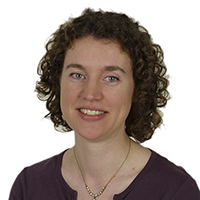Welcome to the second issue of Science in School Editorial article

Editor of Science in School
In this issue, we have contributions from ten countries covering topics as varied as astronomy, environmental chemistry and insect biology. Exciting European projects include a floating exhibition in Germany, an Italian university-school laboratory and a UK scheme to bring young scientists into the classroom. Among my personal favourites are two articles that together address the ‘theory and practice’ of one of my favourite substances: chocolate.
Some of you have told us a little bit about how you have used the articles in our first issue. It seems a shame just to tell us, though, when teachers everywhere might be able to put your experience to good use. So we would like to use your work to support the teaching community across Europe. Have you perhaps turned one of our science articles into a teaching resource? Did you adapt some of our teaching materials to your own curriculum? Have you translated one of our articles for your students? Or did you use one in a completely different context, such as a language lesson or an art class? Please tell us – we are eager to spread your ideas! We may use them in the journal; otherwise, you will soon have the opportunity to join a discussion forum on our website, to exchange creative ideas and useful information.
Remember that while the print edition of Science in School is in English, we are adding value to the articles we publish by offering them online in many European languages. I’m pleased to be able to report that, with the help of many people from across Europe, we already have articles available in Albanian, Czech, Dutch, French, German, Italian, Portuguese, Russian, Spanish and Swedish. Of course, we want to build on this, so if you would like to translate articles, please get in touch.
Each issue has a print run of 20 000 copies, which are being sent free of charge to European science teachers. In this, too, we have received a great deal of support: teacher organisations, scientific institutes, education ministries and others have kindly agreed to distribute print copies of Science in School in their own countries. If you are able to help us by distributing this free European resource further, for example, by mailing a copy with other printed material you send to teachers, that would be a great help.
Finally, we are delighted to have received many excellent contributions from readers. We hope you enjoy reading some of them in this issue – and please continue to send us articles!
